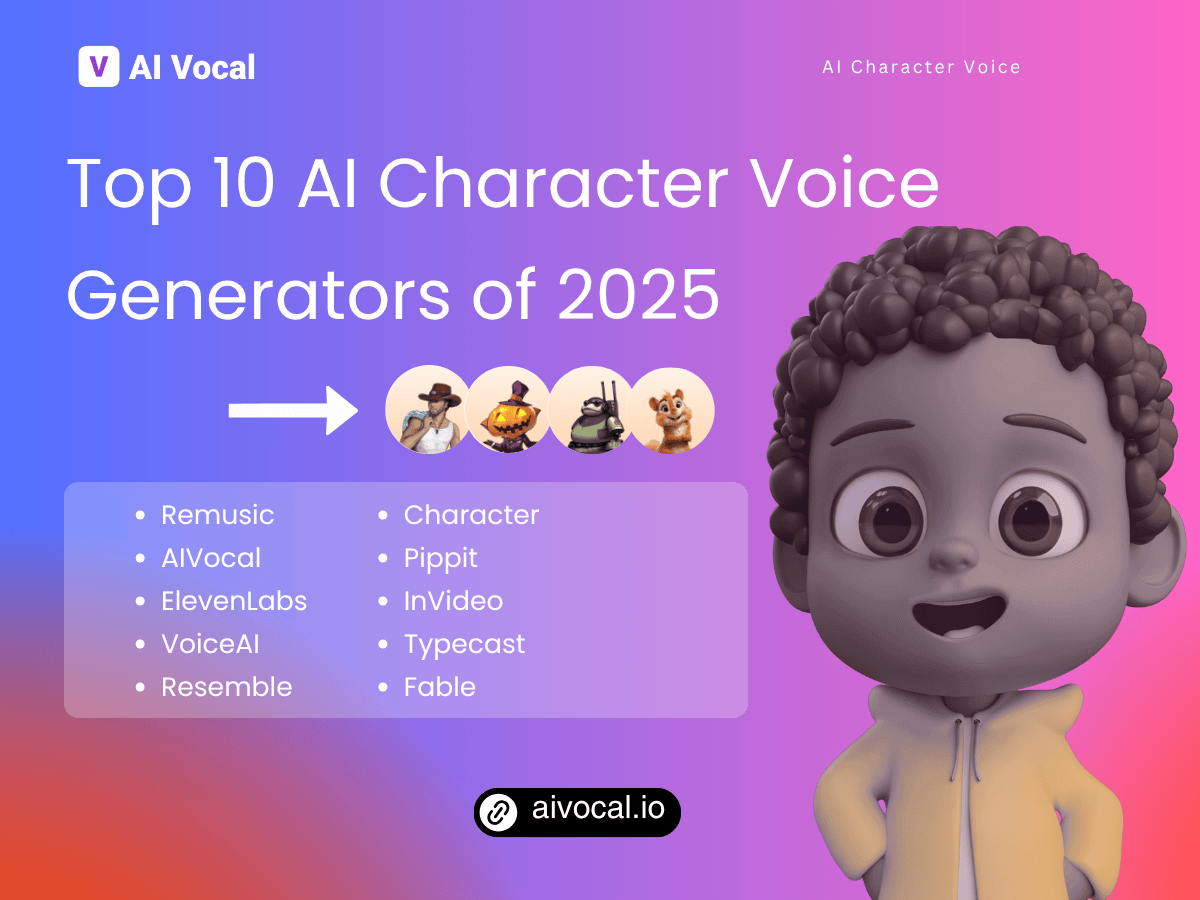Introdution to AI Character Voice
In 2025, creators, game developers, and animators face a new challenge: finding believable AI character voice solutions that bring virtual characters to life. Natural emotion, tone consistency, and voice style diversity have become essential for immersive storytelling across games, films, and metaverse experiences.
This guide introduces the Top 10 AI Character Voice Generators of 2025, exploring how these tools work, their pros and cons, pricing signals, and practical tips to choose the best fit for your creative workflow.
Our evaluation criteria include voice quality, customization features, cloning safety, API support, and cost efficiency. According to NVIDIA’s Speech Processing Research, recent advancements in neural speech synthesis enable near-human performance, allowing AI voice for characters to sound more expressive and context-aware than ever before.
, advancements in neural speech synthesis now enable near-human character voices, reshaping how digital creators design authentic audio experiences.
Why AI Character Voice Matters in 2025
In 2025, AI voice for characters has become integral across digital media. In gaming, it enables dynamic NPCs with unique personalities and real-time responses. In animation and audiobooks, it offers unprecedented vocal diversity and production speed. For podcasts and virtual assistants, it provides consistent, branded voices that enhance user engagement. The technology also revolutionizes localization and dubbing, allowing for rapid, cost-effective multilingual content adaptation. The core advantages of an digital character voice generator lie in its speed and scalability, producing high-quality performances in minutes. Recent breakthroughs in emotional speech synthesis and platforms like ElevenLabs' "Voice Library" now enable text to AI voice creation conversion with stunning realism. Furthermore, innovations in AI voice for characters singing are unlocking new creative possibilities in music and interactive entertainment, making AI voice tech a foundational tool for content creation.
How AI Character Voice Generators Work
AI character voice generators transform text into expressive speech through a multi-stage pipeline: Input text first undergoes linguistic analysis, then receives detailed prosody control for emotional pacing and intonation. An acoustic model generates spectral features, which a neural vocoder converts into the final audio waveform.
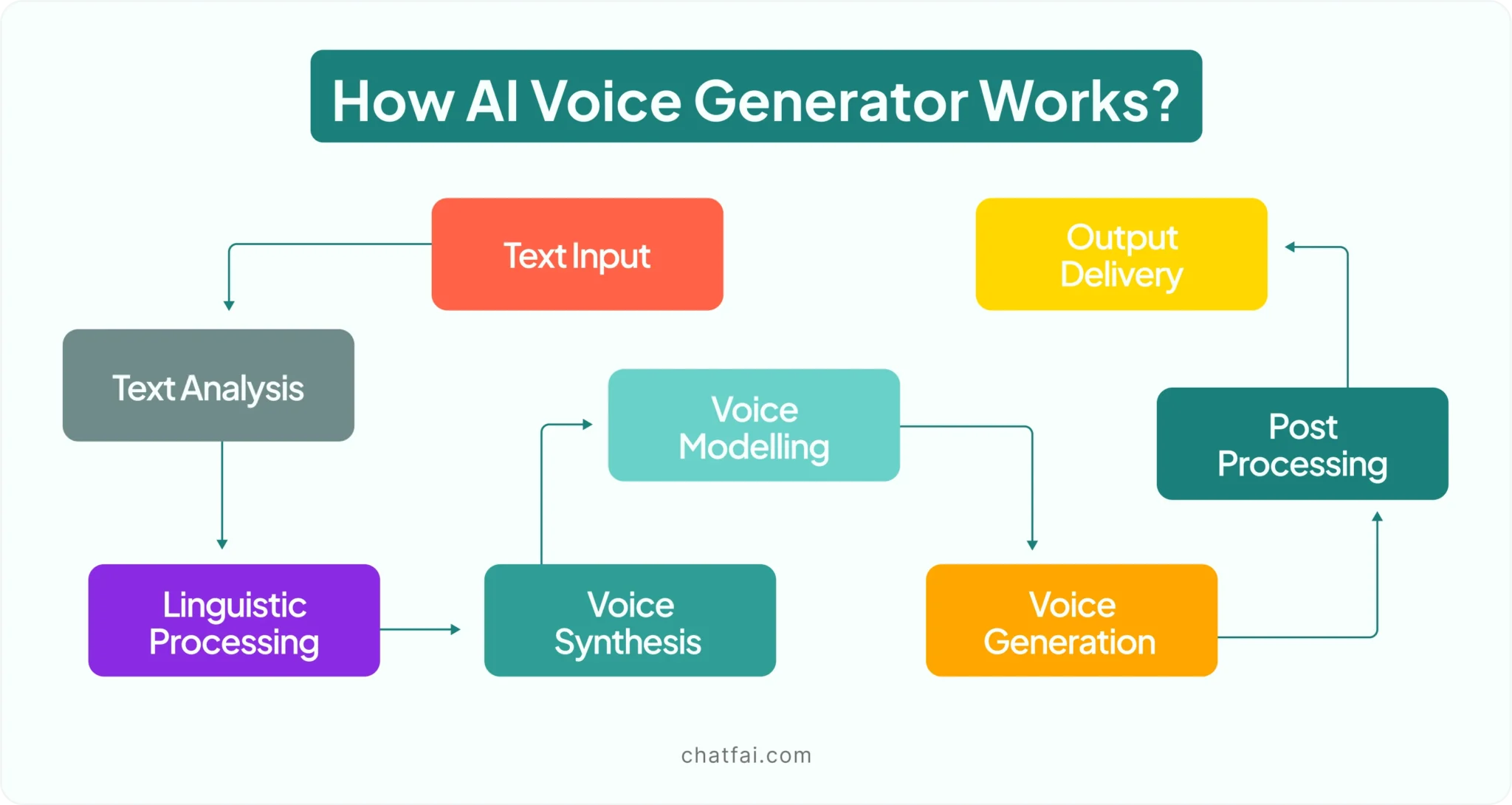
Key capabilities include voice cloning (creating digital voice doubles from short 3-5 minute samples), character voice design (crafting entirely synthetic voices), and controllable TTS for precise emotional delivery. Platforms typically maintain ethical safeguards by requiring speaker consent for cloning and implementing audio watermarking to detect synthetic media. These same technologies power advanced applications like AI voice for characters singing and enable seamless text to AI voiceover conversion for diverse creative and commercial needs.
The Top 10 AI Character Voice Tools of 2025
Now that we understand what character voice generator is, why it's transformative, and how it works, let's explore the top 10 tools that make it happen. The following table provides a quick preview of the leading platforms in the market.
| # | Tool Name | Core Strength | Ideal Use Case | Key Limitation |
| 1 | Remusic | Singing AI voices for characters | Music videos, vocal animation | Focused on music, not full TTS |
| 2 | AIVocal | Text to AI character voice, cloning | Voice acting, audiobooks | Fewer advanced emotional tones |
| 3 | ElevenLabs | Expressive emotional voice cloning | Narration, games | High cost at scale |
| 4 | VoiceAI | Real-time voice avatars | Streaming, roleplay | Limited prosody control |
| 5 | Resemble | Custom cloning API | Game dialogue, dev tools | Requires technical setup |
| 6 | Character.AI | Conversational persona voices | Chatbots, AI companions | No fine control on voice design |
| 7 | Pippit | Mobile short-form AI voices | Reels, TikTok | Limited customization |
| 8 | InVideo | Built-in video + voice generator | Marketing videos | Voice nuance less detailed |
| 9 | Typecast | Large voice library & cloning | Dubbing, drama projects | Expensive for large teams |
| 10 | Fable | Storytelling & character dialogue | Audiobooks, fiction | Narrower feature set |
10 AI Character Voice Tools — Quick Comparison
Remusic
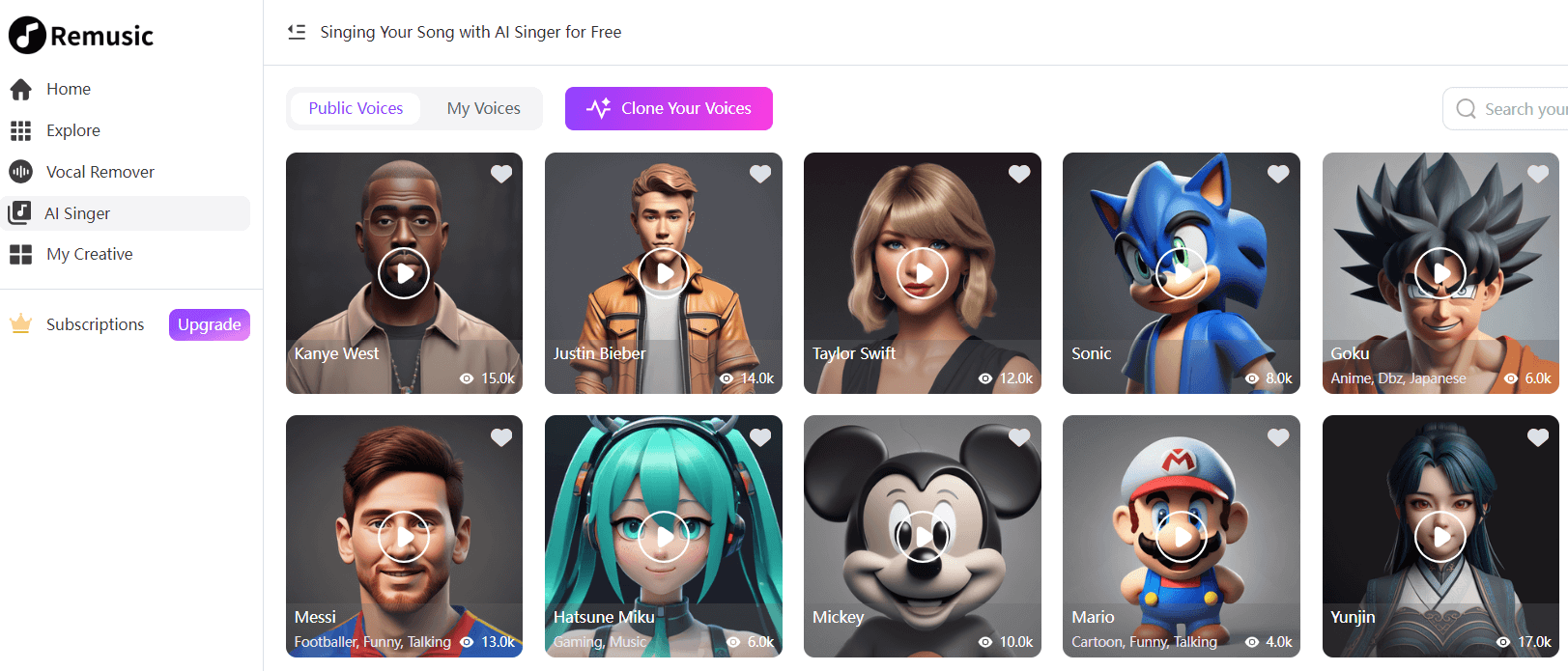
- Feature Highlights: Remusic delivers cutting-edge AI characters singing with customizable tone, lyrics generation, and melody alignment. Perfect for users blending music and storytelling.
- Best Use Case: Ideal for musical avatars, animated singers, or hybrid voice performances in short films.
- Limitation: Focused mainly on singing voices rather than traditional spoken AI voice for characters.
AIVocal
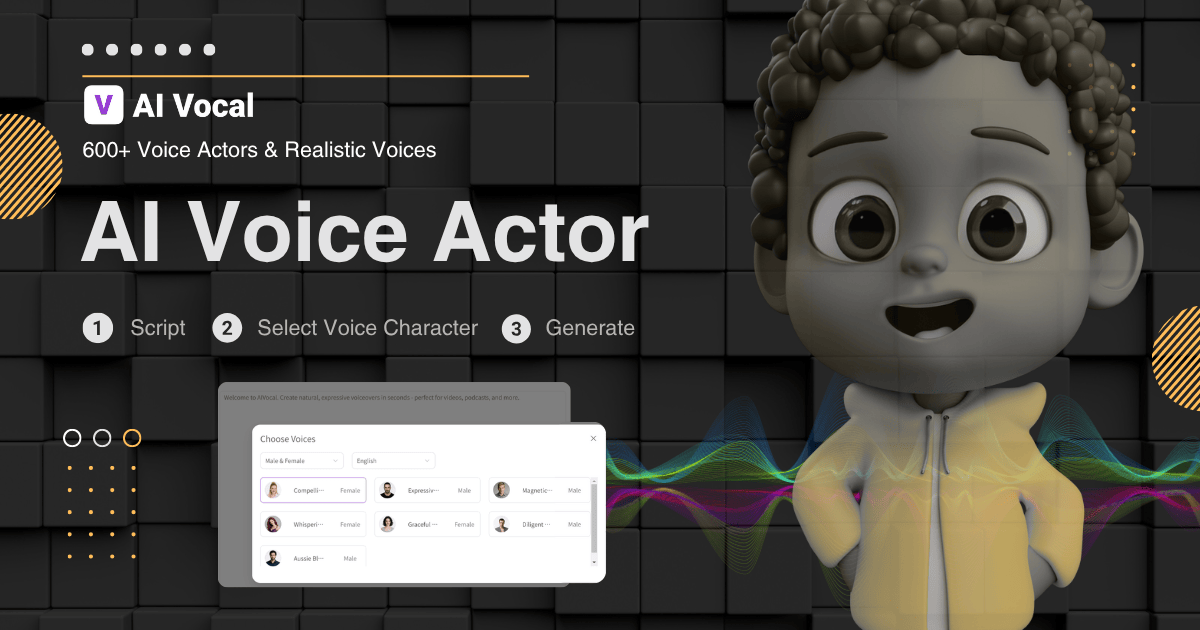
- Feature Highlights: AIVocal.io specializes in text to AI voice for characters and realistic cloning, designed for voice actors, podcasters, and game developers.
- Best Use Case: Creating custom character voices or audiobook narration that feels natural and expressive.
- Limitation: Currently fewer fine-tuned emotional styles compared with leaders like ElevenLabs.
ElevenLabs
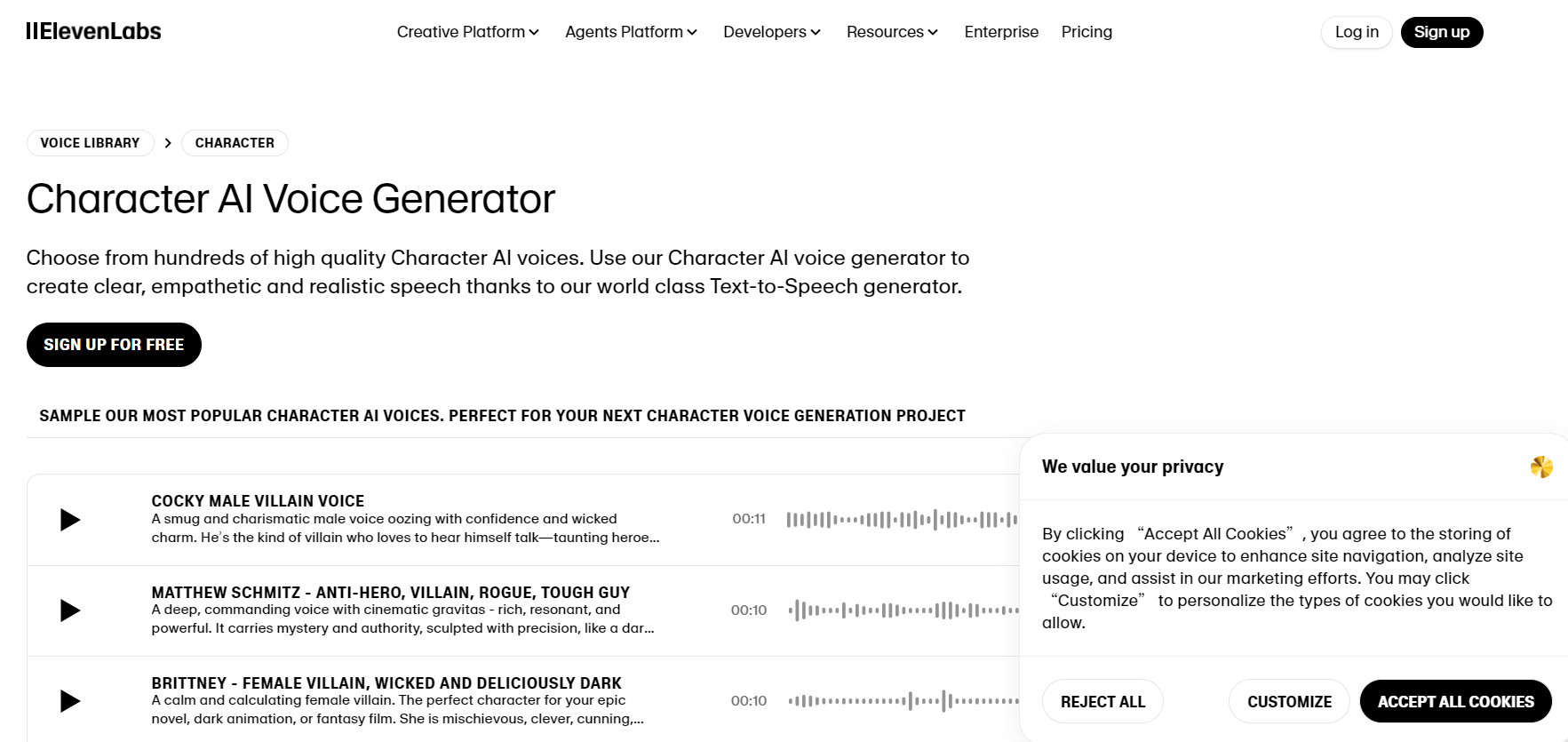
- Widely recognized for setting the industry benchmark in voice naturalness, ElevenLabs is a powerhouse for narrative depth and character immersion.
- Function Highlights: Its core strength lies in an advanced context-aware speech synthesis engine that delivers unparalleled emotional nuance and prosody, making it a top choice for text to AI voice for characters projects requiring high realism.
- Best Use Cases: Ideal for dynamic video game NPCs, character-driven animation, and immersive audiobook narration where voice quality is paramount.
- One Limitation: Its pricing tiers can be a limiting factor for individual creators or for projects requiring massive, high-volume audio generation.
VoiceAI
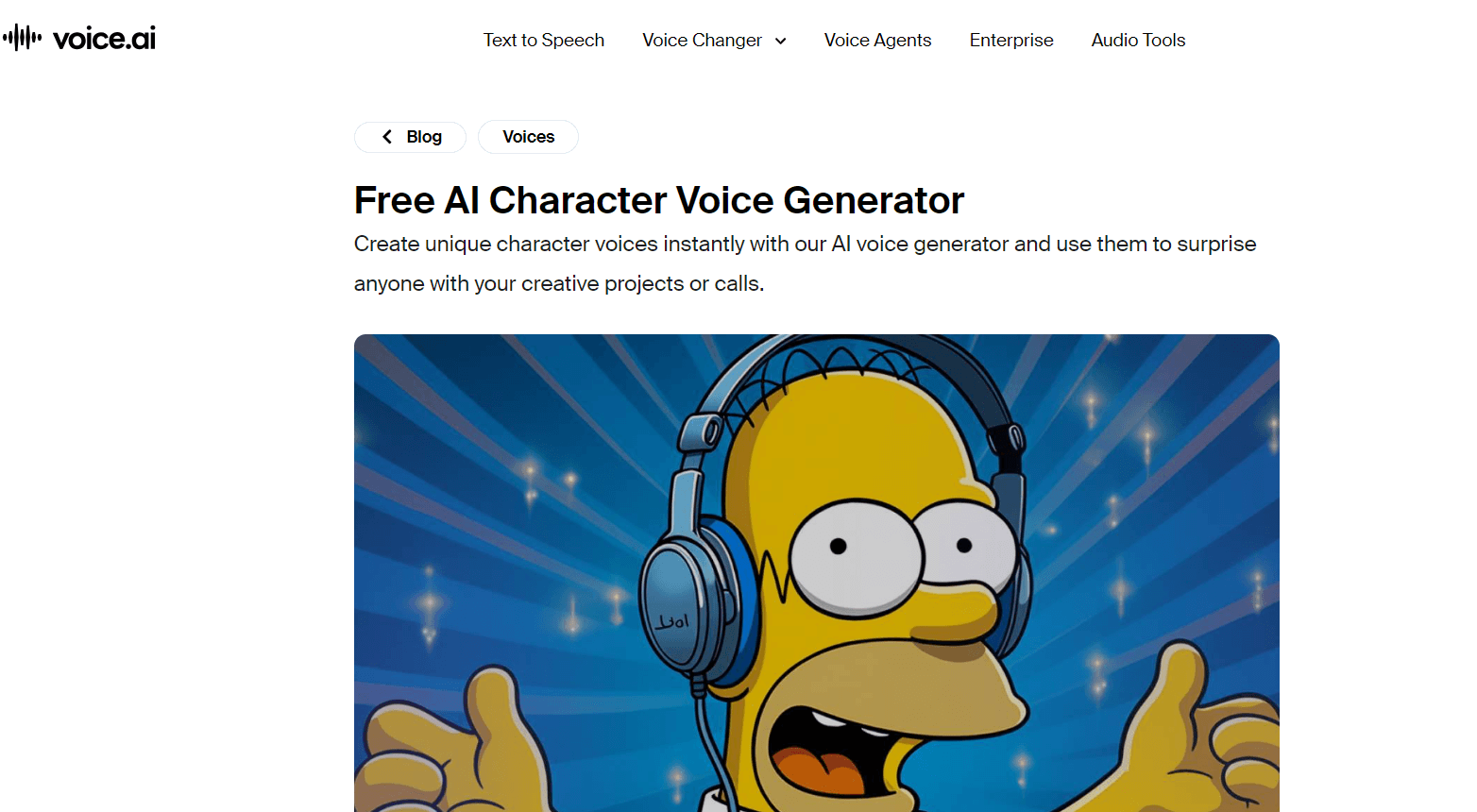
Leveraging the power of a massive community, VoiceAI offers a vast and unique selection of voice models, including those based on user-generated and popular culture characters.
- Function Highlights: Its standout feature is a user-contributed voice library with thousands of models, alongside a robust real-time voice changer that allows for live text to digital character voice conversion during streaming or calls.
- Best Use Cases: Excellent for live streamers, content creators on platforms like Discord and Zoom, and anyone looking for fun, trending, or niche voices for real-time interaction.
- One Limitation: The quality and ethical sourcing of user-uploaded voice models can be inconsistent and may not be suitable for secure commercial projects.
Resemble
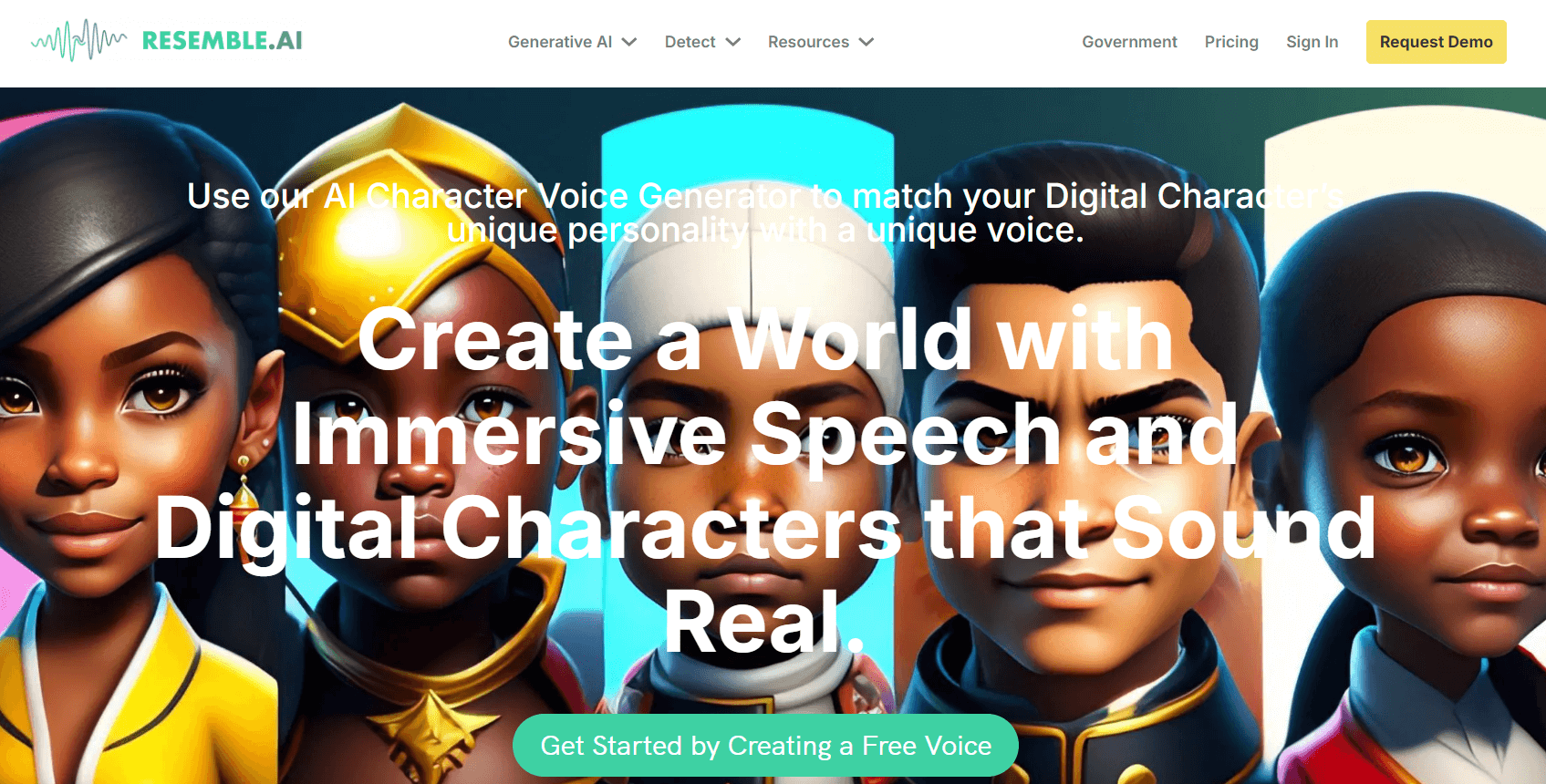
- Feature Highlights: Resemble.ai provides precise cloning, speech emotion layers, and API integration for large applications.
- Best Use Case: Game developers or studios needing dynamic NPC or cinematic voice lines.
- Limitation: Setup and tuning require technical background.
Character
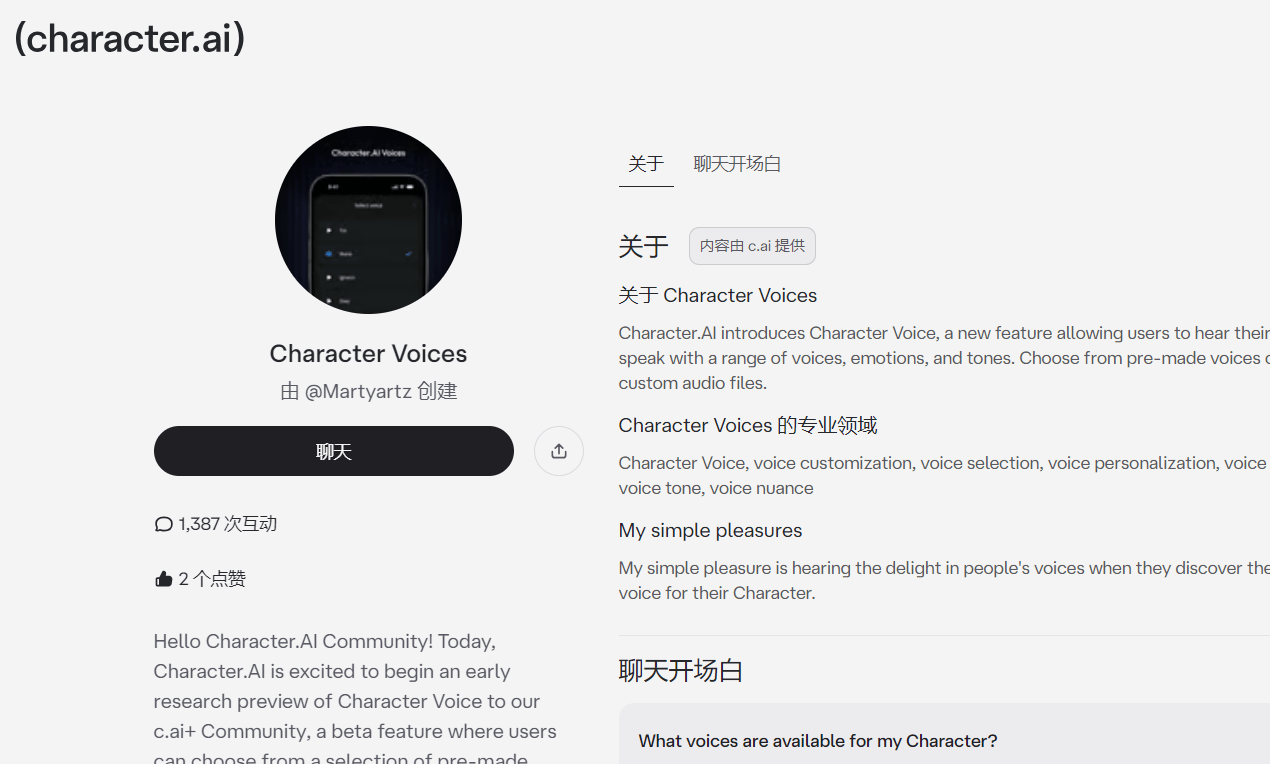
- Feature Highlights: Character.ai creates unique personas that speak naturally, merging dialogue AI with synthetic voice.
- Best Use Case: Building AI companions, story-driven bots, or creative writing assistants.
- Limitation: Offers limited control over specific tone or tempo of generated voices.
Pippit
- Feature Highlights: Compact tool for creators who need fast voice output for short videos or memes.
- Best Use Case: TikTok, Instagram, or YouTube Shorts where quick ai character voice narration is needed.
- Limitation: Limited editing and export options.
InVideo
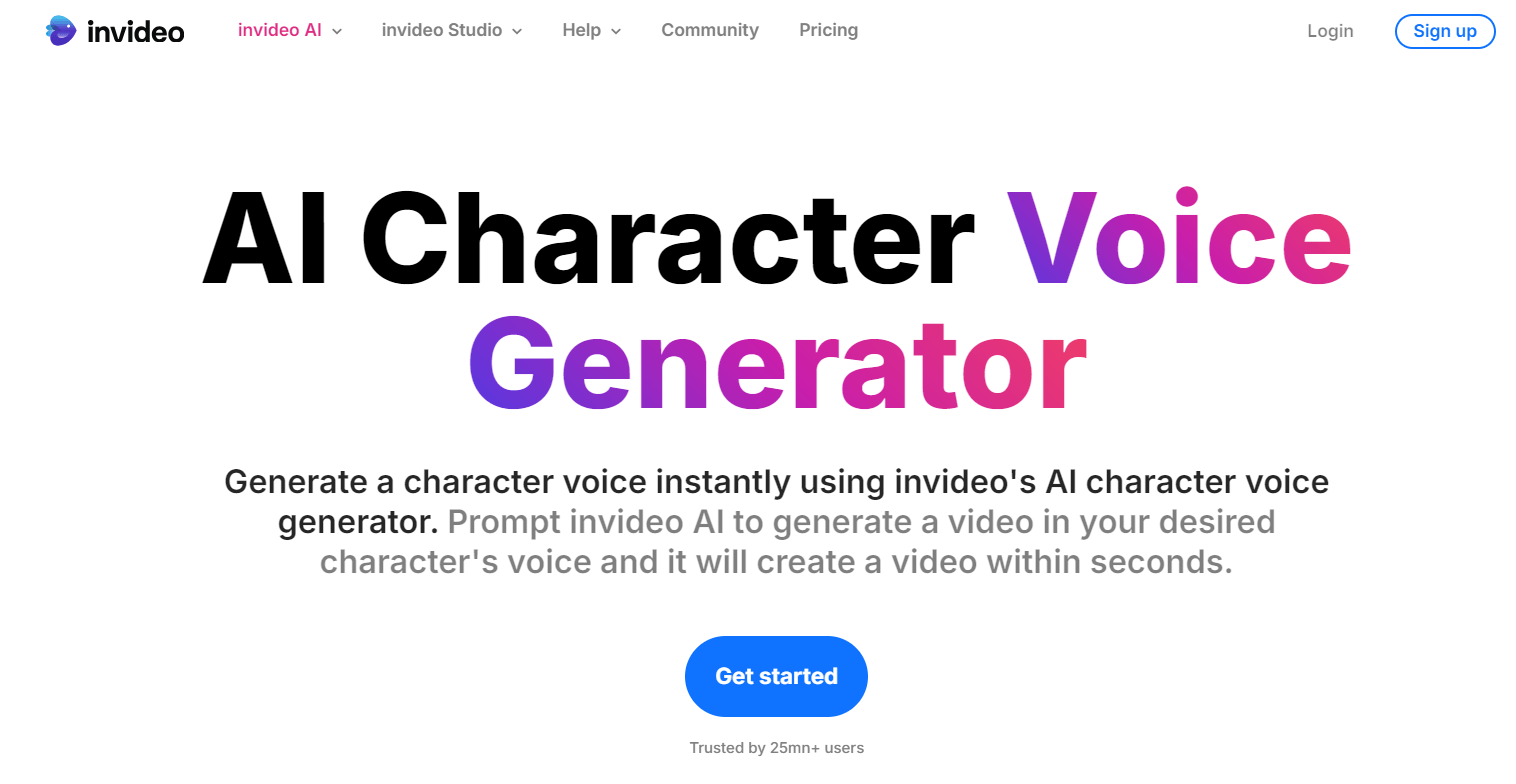
- Feature Highlights: InVideo integrates video templates and AI voiceovers into one platform.
- Best Use Case: Marketers and educators who want instant talking videos with realistic narration.
- Limitation: Lacks the subtlety of high-end voice cloning models.
Typecast
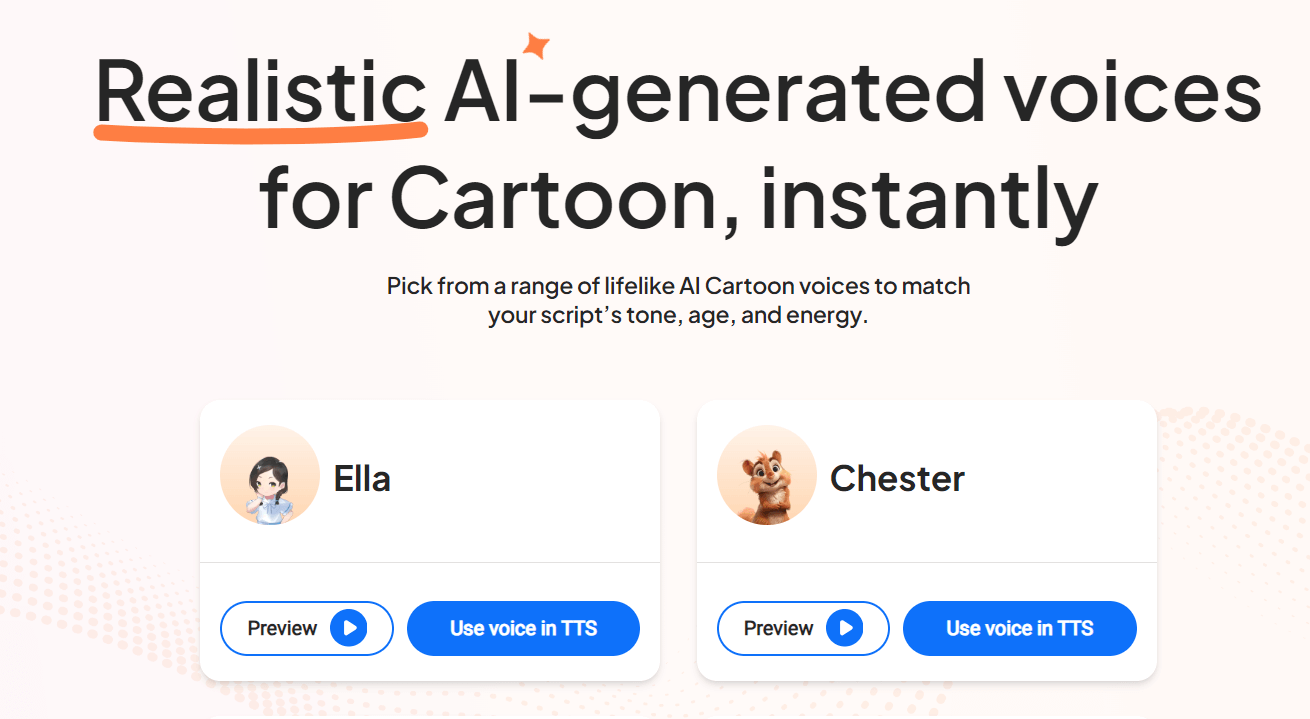
- Feature Highlights: Typecast features hundreds of voices, cloning, and emotion controls.
- Best Use Case: Film dubbing, animation, and multi-character podcasts.
- Limitation: Subscription costs rise for enterprise use.
Fable
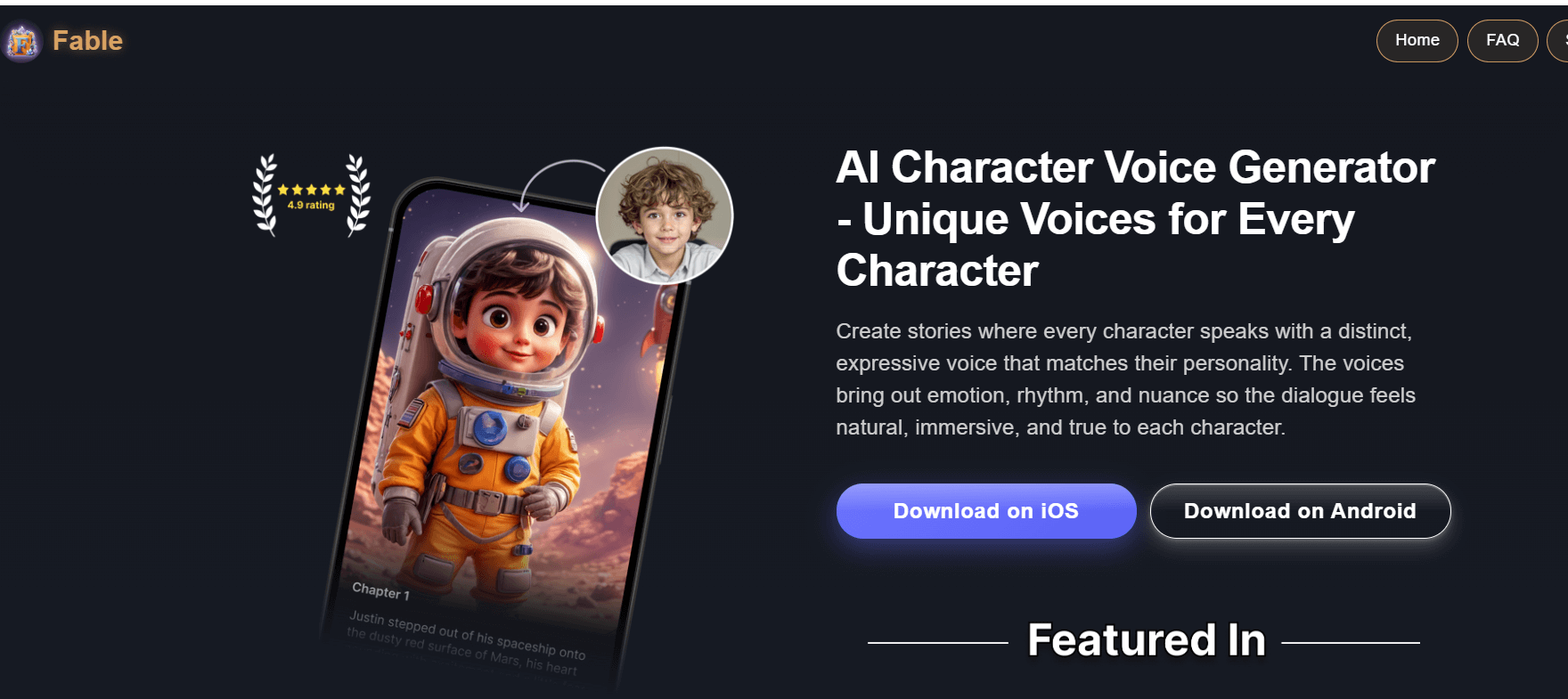
- Feature Highlights: Focused on dialogue-rich storytelling and branching narratives for fiction and audiobooks.
- Best Use Case: Writers, game devs, and narrative designers who need consistent character voices.
- Limitation: Doesn’t offer cloning or developer API integration yet.
Top Use Cases for AI Character Voice Generators
AI character voice generators are revolutionizing content creation across several key areas. Three of the most prominent use cases are:
- Video Game NPCs & Dynamic Dialogue: This technology allows for immersive worlds where non-playable characters can deliver context-aware lines, making each player's experience unique.
- Pro Tip: For games, use short lines of dialogue and add emotional tags (e.g.,
[angry],[whispering]) to the text to AI character voice generator for more dynamic performances.
- Pro Tip: For games, use short lines of dialogue and add emotional tags (e.g.,
- Audiobooks & Multi-Character Narration: It enables a single producer to create entire audiobooks, with the AI seamlessly switching between distinct character voices and a neutral narrator.
- Pro Tip: When creating character voices, design a unique "voice print" for each one (e.g., higher pitch, slower pace) and maintain a consistent style guide for the narrator to ensure audio continuity.
- Content Localization & Dubbing: AI can dub videos into multiple languages while preserving the original speaker's vocal characteristics and emotional tone, drastically reducing cost and time.
- Pro Tip: For localization, use a high-quality voice cloning model of the original actor to maintain brand and character consistency across different languages, making the result feel authentic.
These applications showcase the power of AI to generate expressive audio at scale, with emerging uses like AI character voice singing further expanding creative possibilities.
How to Create an AI Character Voice — Step-by-Step Guide
Let's Choose AI Character Voice
You don’t need to be a sound engineer or own expensive studio gear to craft a believable AI character voice in 2025. Thanks to new-generation tools with intuitive controls and free access options, anyone can turn written dialogue into expressive voiceovers within minutes. One of the most user-friendly examples is the AI Voice Actor feature from AIVocal, which offers a simple, fast, and free way to generate custom voices for storytelling, gaming, or animation.

Step 1: Choose a Voice Character Start by exploring AIVocal’s diverse character library. Pick a voice that suits your creative scene — a calm narrator, bold hero, or playful companion.
Step 2: Adjust Tone, Emotion, and Language Customize the tone, emotional intensity, and language. This helps shape how your AI character voice feels and reacts, giving your story depth and personality.
Step 3: Prepare Your Script Type or paste your dialogue into the text to AI character voice box. Short, clear sentences help produce smoother, more natural results.
Step 4: Generate and Download Preview Click Generate Voice to preview your chosen style. Once it sounds right, download the audio (MP3 or WAV) and use it directly in your game, animation, or video.
FAQs about AI Character Voice
Q1: What is an AI character voice? An AI character voice is a digitally generated voice that mimics human speech, tone, and emotion to bring virtual characters to life.
Q2: How do I make a realistic AI character voice? Use an AI voice tool, choose a character tone and style, adjust emotion settings, input your text, and generate a natural-sounding output.
Q3: Can AI character voice generators clone celebrity voices? Some tools can mimic voice styles, but cloning real celebrity voices without consent is illegal and restricted by most platforms.
Q4: Which AI character voice generator is best for games? ElevenLabs and AIVocal are popular for their expressive, high-quality voices and flexible APIs for character dialogue in games.
Q5: Are AI character voice generators free to use? Many tools, like AIVocal and VoiceAI, offer free tiers with limited credits, while advanced or commercial use may require a paid plan.
Q6: How much voice sample do I need to clone a character voice? Most AI voice cloning systems need 1–3 minutes of clean, clear voice data to generate an accurate and consistent clone.
Conclusion
As storytelling, gaming, and virtual creation continue to evolve, AI character voice generators have become essential tools for creators who want emotion, realism, and personality without complex recording setups. From singing AI characters to expressive dialogue generation, 2025 offers more accessible and powerful solutions than ever.
If you’re new to this field or simply want a quick, realistic way to give your characters a voice, try the AIVocal AI Voice Actor. It’s beginner-friendly, free to start, and delivers professional-level results within minutes. Whether you’re developing a game, producing a short animation, or building your own AI-driven story, AIVocal lets your imagination speak — literally.


